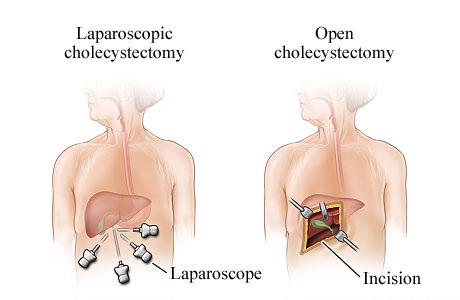Laparoscopic Surgery in India
What is Laparoscopic Surgery ?
Laparoscopic surgery, also called minimally invasive surgery (MIS), bandaid surgery, or keyhole surgery, is a modern surgical technique in which operations are performed far from their location through small incisions (usually 0.5–1.5 cm) elsewhere in the body.
There are two types of laparoscope: a telescopic rod lens system, that is usually connected to a video camera (single chip or three chip), or a digital laparoscope where the charge-coupled device is placed at the end of the laparoscope.
Advantages
There are a number of advantages to the patient with laparoscopic surgery versus an open procedure. These include:
Reduced hemorrhaging, which reduces the chance of needing a blood transfusion.
Smaller incision, which reduces pain and shortens recovery time, as well as resulting in less post-operative scarring.
The perimuscular ("around the muscle") fibrous tissue, another layer of connective tissue
Less pain, leading to less pain medication needed.
Although procedure times are usually slightly longer, hospital stay is less, and often with a same day discharge which leads to a faster return to everyday living.
Reduced exposure of internal organs to possible external contaminants thereby reduced risk of acquiring infections.
Disadvantages
While laparoscopic surgery is clearly advantageous in terms of patient outcomes, the procedure is more difficult from the surgeon's perspective when compared to traditional, open surgery:
Poor depth perception.
The tool endpoints move in the opposite direction to the surgeon's hands due to the pivot point, making laparoscopic surgery a non-intuitive motor skill that is difficult to learn. This is called the Fulcrum
Some surgeries (carpal tunnel for instance) generally turn out better for the patient when the area can be opened up, allowing the surgeon to see "the whole picture" surrounding physiology, to better address the issue at hand. In this regard, keyhole surgery can be a disadvantage.
Laparoscopic Surgery

Gallstones
Gallstones are the most common problem to affect the gallbladder. Gallstones generally form when the bile is saturated with either cholesterol or bilirubin. Only a minority of gallstones cause symptoms; most stones are passed along the biliary system. When symptoms occur, severe pain in the upper right part of the abdomen is felt. If the stone blocks the gallbladder, inflammation as cholecystitis may result. If the stone lodges in the biliary system, jaundice may occur; and if the stone blocks the pancreatic duct, then pancreatitis may occur.
Inflammation
Inflammation of the gallbladder is known as cholecystitis. Inflammation is most commonly because of obstruction of the duct with gallstones, known as cholelithiasis.
Gallbladder removal
A cholecystectomy is a procedure in which the gallbladder is removed. It may be removed because of recurrent gallstones, and is considered an elective procedure. A cholecystectomy may be an open procedure, or one conducted by laparoscopy.